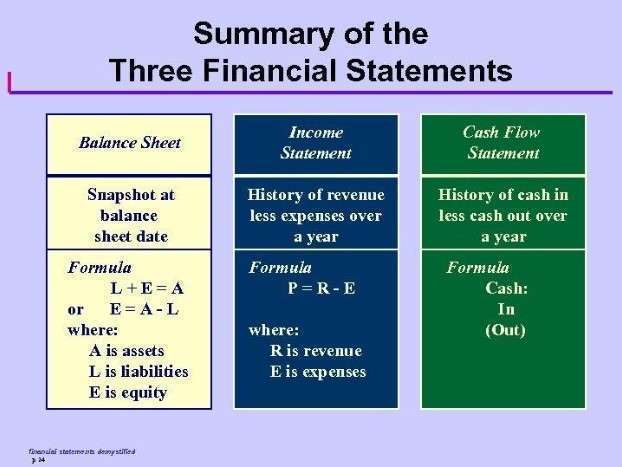
For example, let’s say you need to buy a new projector for your conference room. Since money is leaving your business, you would enter a credit into your cash account. You would also enter a debit into your equipment account because you’re adding a new projector as an asset.
- That is, if the account is an asset, it’s on the left side of the equation; thus it would be increased by a debit.
- A nominal account represents any accounting event that involves expenses, losses, revenues, or gains.
- The Ascent, a Motley Fool service, does not cover all offers on the market.
- A cash flow statement is a financial statement that summarizes the movement of cash and cash equivalents that enter and leave a company.
- Meanwhile, liabilities, revenue, and equity are decreased with debit and increased with credit.
- Expenses are the costs that a business incurs during regular business operations.
- The main differences between debit and credit accounting are their purpose and placement.
Accumulated Depreciation appears in the asset section of the balance sheet, so it is not closed out at the end of the month. Consider, also, the Intuit Academy Bookkeeping Professional Certificate. Inside, you’ll discover bookkeeping fundamentals like assets, liabilities, equity, and financial statement analysis.
Cons of using debit cards
The income statement presents the true cost of doing business each period. With an expense account, you can easily compare your outgoing and incoming money. And by separating your expenses into different accounts, you can determine where all of your money is going. Most final expense policies are guaranteed or simplified issue policies, meaning no medical exam is required. However, simplified insurance life insurance requires a health questionnaire, which influences your eligibility and rates. Final expense life insurance is for those who might be in poor health and can’t qualify for traditional life insurance.
Reporting options are also good in Xero, and the application offers integration with more than 700 third-party apps, which can be incredibly useful for small businesses on a budget. Assets on the left side of the equation (debits) must stay in balance with liabilities and equity on the right side of the equation (credits). Your decision to use a debit or credit entry depends on the account you’re posting to and whether the transaction increases or decreases the account. For example, if a business takes out a loan to buy new equipment, the firm would enter a debit in its equipment account because it now owns a new asset.
Pros of using credit
Cash is debited because the asset account is increasing from the refund. And, last but not least, creating an expense account is all part of managing your accounting books. While reading the above list, you may have wondered about the difference between expenses and liabilities. Liabilities are unpaid expenses that you owe to businesses, employees, or other entities. You can create sub-accounts for all your expenses, like payroll and advertising.
AAA Payment Options: How To Pay Your Car Insurance (2024) – MarketWatch
AAA Payment Options: How To Pay Your Car Insurance ( .
Posted: Mon, 11 Mar 2024 07:00:00 GMT [source]
Prepaid expenses are payments made in advance for goods and services that are expected to be provided or used in the future. While accrued expenses represent liabilities, prepaid expenses are recognized as assets on the balance sheet. This is because the company is expected to receive future economic benefit from the prepayment.
Accrued Expenses
Bills payable are entered to the accounts payable category of a business’s general ledger as a credit. Once the bill has been paid in full, the accounts payable will be decreased with a debit entry. Insurance expense is the amount that a company pays to get an insurance contract and any additional premium payments. The payment made by the company is listed as an expense for the accounting period. The liability account is debited to zero out the balance, and cash is credited to record the payment. The portion of the prepaid insurance asset that applies to the current month must be expensed.

Prepaid expenses are initially recorded as assets, but their value is expensed over time onto the income statement. Unlike conventional expenses, the business will receive something of value from the prepaid expense over the course of several accounting periods. When the insurance premiums are paid in advance, they are referred to as prepaid.
What is the difference between debit and credit?
The adjusting entry for taxes updates the Prepaid Taxes and Taxes Expense balances to reflect what you really have at the end of the month. The adjusting entry TRANSFERS $100 from Prepaid Taxes to Taxes Expense. It is journalized and posted BEFORE financial statements are prepared so that is insurance expense a debit or credit the income statement and balance sheet show the correct, up-to-date amounts. The adjusting entry for rent updates the Prepaid Rent and Rent Expense balances to reflect what you really have at the end of the month. The adjusting entry TRANSFERS $1,000 from Prepaid Rent to Rent Expense.
- Accrued expenses also may make it easier for companies to plan and strategize.
- When a company accrues (accumulates) expenses, its portion of unpaid bills also accumulates.
- If you want help tracking assets and liabilities properly, the best solution is to use accounting software.
- The owner’s equity and shareholders’ equity accounts are the common interest in your business, represented by common stock, additional paid-in capital, and retained earnings.
- As per the golden rules of accounting for (nominal accounts) expenses and losses are to be debited.